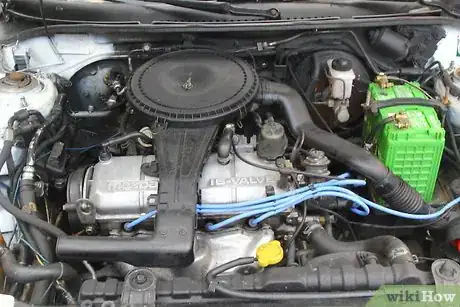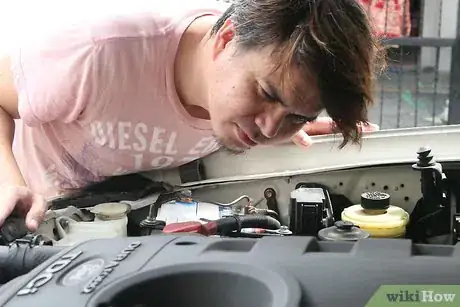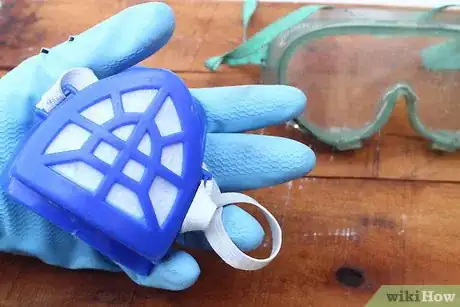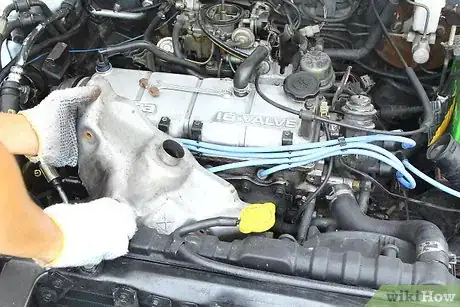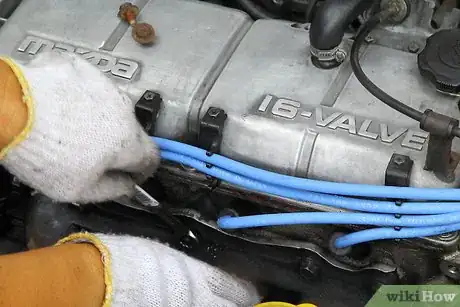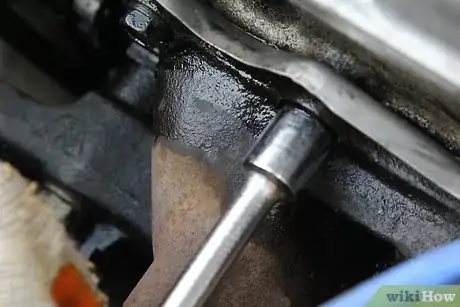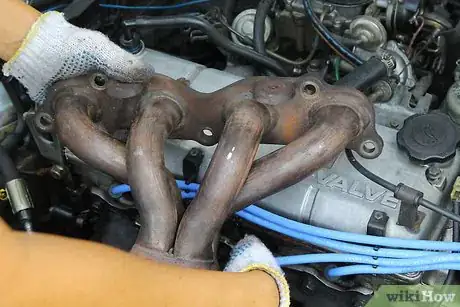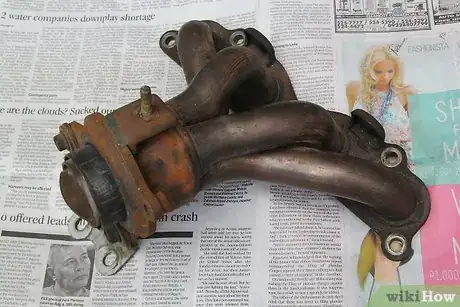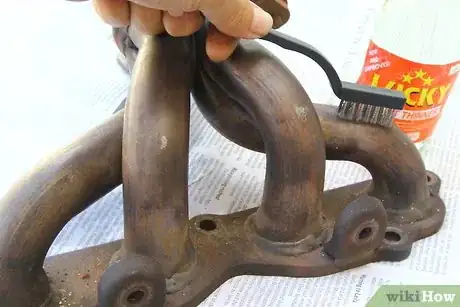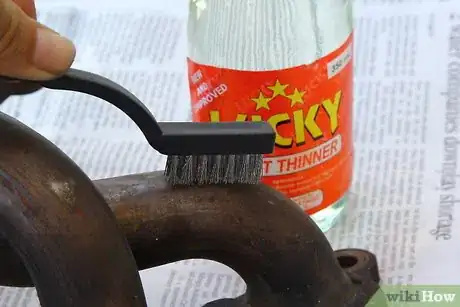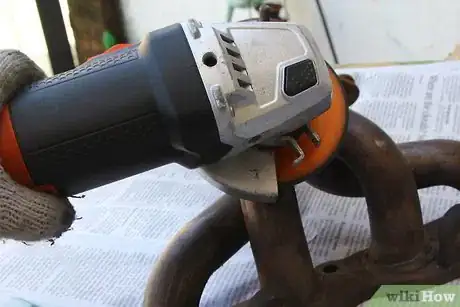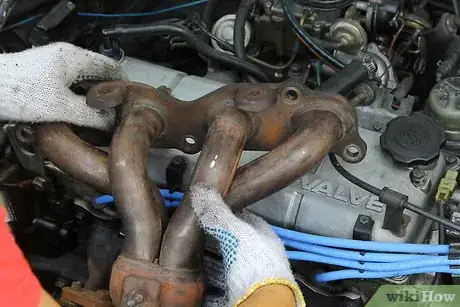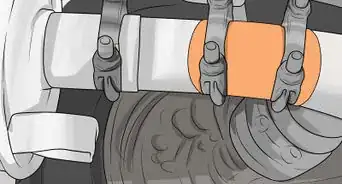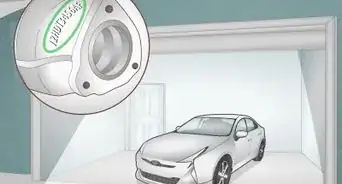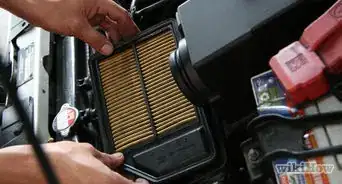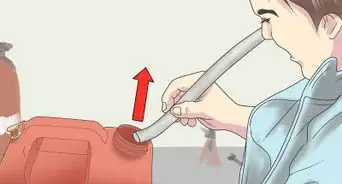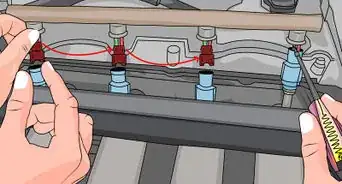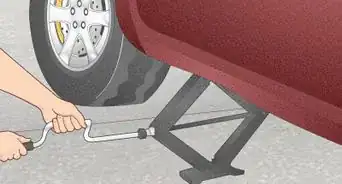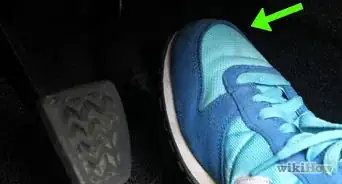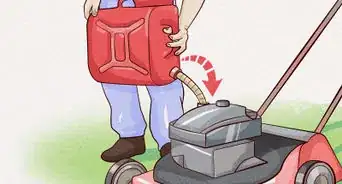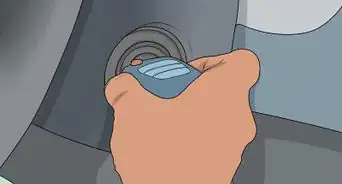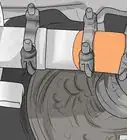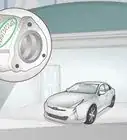wikiHow is a “wiki,” similar to Wikipedia, which means that many of our articles are co-written by multiple authors. To create this article, volunteer authors worked to edit and improve it over time.
This article has been viewed 114,337 times.
Learn more...
Both gas and diesel combustion engines have manifolds. There are intake and exhaust manifolds in cars, trucks, motorcycles, and boat engines. Air and fuel mixtures enter the engine through the intake manifold, and fuel emissions exit through the exhaust manifold. The intake manifold and how it functions contributes to the engine's fuel efficiency. The exhaust manifold's job is to collect exhaust from the different engine cylinders and direct them out of the engine. The exhaust manifold is basically a pipe that leads to a catalytic converter and, then, through the muffler to the exhaust pipe. Of course, over time the manifold will collect dirt, dust, and corrosion. As this happens, the exhaust manifold loses efficiency in its job of releasing the gases, and it begins to foul the atmosphere, contributing to smog and endangering the driver and passengers. Even if you don't race your engines for sport or hobby, it is helpful to know how to clean exhaust manifolds on your own vehicles.
Steps
Find the Manifold
-
1Use your owner's manual to locate the exhaust manifold.
- 4-cylinder engines have one exhaust manifold.
- 6 or 8-cylinder vehicles have two manifolds.
- Look for the manifold in front of the engine block on a front-end driven vehicle.
- Find the manifold on the side of the engine block on a rear-driven.
- This may vary slightly on boat engines or those on other small vehicles.
-
2Familiarize yourself with your manifold's design.[1]
- Most exhaust manifolds are made of cast iron or a steel alloy similarly able to handle high temperatures.
- Each manifold has an exhaust port matched to each exhaust outlet on the cylinder head.
- The exhaust flows through these ports to a single outlet.
- These ports are openings in an otherwise flat machined surface that fits with a gasket to the surface of the cylinder head.
- Gaskets, made of paper, asbestos materials, or copper, serve as seals to prevent leakage between the manifold and cylinder head.
Work Safely
Remove the exhaust manifold.
-
1Remove all the hoses that are attached to the manifold.[2]
-
2Spray the bolts on the manifold heat shield (usually found on recent cars) with lubricating solvent and remove with socket wrench.
-
3Remove all bolts on the manifold itself after applying lubricating spray solvent.
-
4Remove the manifold in a well ventilated work space.
Clean the Exhaust Manifold
-
1Coat the interior of the manifold with lacquer thinner.
-
2Scrub coated areas with wire brush and steel wool.
-
3Use electric grinder to break up debris.
-
4Repeat the process throughout until you are satisfied with the look of the metal.[3]
-
5Wipe the manifold clean throughout with lacquer thinner.
- Lacquer thinner is a solvent, but it also cures the metal with a coating that you can thicken with repeated applications.
Remount the Manifold
-
1Match the ports to those on the cylinder head, and replace gasket before bolting manifold in place.[4]
-
2Contact your local dealer or research repairs in order to determine the precise sequence and torque level to follow when reinstalling the manifold.
Community Q&A
-
QuestionHow do I stop carbon from going in the engine?
 Community AnswerThe only way is to not start the engine. Carbon comes from burning fuel. You can reduce carbon by making sure the thermostat is good (a hot engine makes less carbon) and by making sure your spark plugs, air cleaner and ignition system are in good condition, since fresh air and good sparks ensure a cleaner burn.
Community AnswerThe only way is to not start the engine. Carbon comes from burning fuel. You can reduce carbon by making sure the thermostat is good (a hot engine makes less carbon) and by making sure your spark plugs, air cleaner and ignition system are in good condition, since fresh air and good sparks ensure a cleaner burn. -
QuestionCan I jet wash the carbon deposit out of my exhaust without removing it?
 Community AnswerNo. The water and cleaner from the wash would end up inside the engine. Removing and jet washing is the only way.
Community AnswerNo. The water and cleaner from the wash would end up inside the engine. Removing and jet washing is the only way. -
QuestionIs it safe to drive if the exhaust manifold is blocked?
 Community AnswerExhaust flows from the head through the manifold/header. Theoretically it’s possible that the manifold could become blocked, preventing the engine from running, but that’s highly unlikely. Under normal conditions the carbon buildup that develops on the manifold is small and doesn’t significantly affect performance. If there was significant buildup to kill the engine, you would notice significant power losses prior to failure.
Community AnswerExhaust flows from the head through the manifold/header. Theoretically it’s possible that the manifold could become blocked, preventing the engine from running, but that’s highly unlikely. Under normal conditions the carbon buildup that develops on the manifold is small and doesn’t significantly affect performance. If there was significant buildup to kill the engine, you would notice significant power losses prior to failure.
Warnings
- Do not use water or a water-based product to clean wrought iron, as the iron will absorb water and ruin the manifold.⧼thumbs_response⧽
- Lacquer thinner emits toxic fumes, so be careful to work in area with good air circulation.⧼thumbs_response⧽
Things You'll Need
- Safety equipment, including work gloves, dust mask, and goggles
- Rags
- Degreaser
- Socket wrench
- Lacquer thinner
- Hand-held electric grinder
- Stiff wire brush
